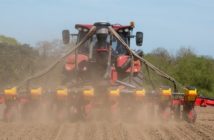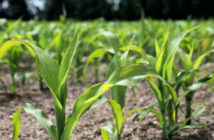Below average grass growth earlier this spring could put next winter’s cow performance and fertility at risk, where grass is cut with high nitrate levels.
“With grass growth picking up, it’s easy to forget the dry and cloudy weather experienced this spring will have delayed nitrogen utilisation in grass plants, something we’ve seen in recent fresh grass analysis results,” says Kingshay assistant technical specialist Emma Wright. “This could mean high nitrate levels in grass when it is due to be cut for silage.
“High nitrates can result in poor silage fermentation and reduce cow forage intakes. Cows eating larger amounts of nitrates can also lead to an increase in early embryonic death, seen as lower conception rates.
“Nitrate levels in grass increase following nitrogen applications because they are taken up by grass plants rapidly and stored within the plants until they are ready to make it into plant protein. Therefore, the time and growth rate between nitrogen application and cutting will affect levels in grass.
“So, a fresh grass analysis, costing less than £17 per sample, could be particularly valuable following this dry spring to help prevent silage quality and cow performance issues,” Ms Wright advises.
Kingshay recommends that grass should not be cut before nitrates have decreased to safe levels, ideally below 0.10%. Between 0.15 and 0.25% nitrate N, there is some risk to silage quality, but this may be limited when sugar and dry matter levels are at optimal levels.
“Above 0.25% Nitrate N cutting should be delayed and another fresh grass sample should be taken after 3-5 days,” says Ms Wright.
“When grass has to be cut at above optimum nitrate levels, seek advice on ensiling practices which may mitigate the effects on silage quality, such as increasing the cutting height.”
For more information see www.kingshay.com


